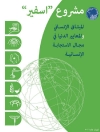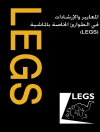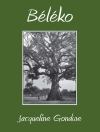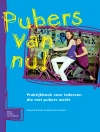The immense changes that the world is undergoing in terms of globalization and migration of peoples have had a profound effect on cultures and identities. The question is whether this means shifts in religious identities for women and men in different contexts, whether such shifts are seen as beneficial, negative or insufficient, or whether social change actually means new conservatisms or even fundamentalisms. Surrounding these questions is the role of education is in any change or new contradiction. This unique book enhances an interdisciplinary discourse about the complex intersections between gender, religion and education in the contemporary world.
Literature in the social sciences and humanities have expanded our understanding of women’s involvement in almost every aspect of life, yet the combined religious/educational aspect is still an under-studied and often under-theorized field of research. How people experience their religious identity in a new context or country is also a theme now needing more complex attention. Questions of the body, visibility and invisibility are receiving new treatments. This book fills these gaps.
The book provides a strong comparative perspective, with 15 countries or contexts represented. The context of education and learning covers schools, higher education, non-formal education, religious institutions, adult literacy, curriculum and textbooks.
Overall, the book reveals a great complexity and often contradiction in modern negotiations of religion and secularism by girls and boys, women and men, and a range of possibilities for change. It provides a theoretical and practical resource for researchers, religious and educational institutions, policy makers and teachers.
Daftar Isi
Introduction: Challenging Patriarchy: New Advances in Researching Religious Feminism and Religious Education.- Section I: The Contested Role of Education, Religion and Gender .- 1. Gender, Religion and the Work of Home Schooling.- 2. Women’s Theologies, Women’s Pedagogies: Globalisation, Education and Liberation in Nicaragua.- 3. Gender, Buddhism and Education: Dhamma and Social Transformation within the Thervada Tradition.- 4. Shakti as a Liberatory and Education Force for Hindu Women.- 5. Shame and Borders: The ‘Aisyiyah’s Struggle for Muslim Women’s Education in Indonesia.- 6. The Role of Silencing among Religious Girls in Jewish, Christian-Arab, Muslim and Bedouin Schools in Israel.- Section II. Religious Education and the Study of Religion .- 7. Gendering Religion Studies: Reconstructing Religion and Gender Studies in Japan.- 8. The Implications of the Feminization of Theology: Reconstructing Sacred Texts as an Educational Issue.- 9. Religious Education beyond Multireligious Instruction: Pupils and Students’ Reactions to Religions Education in a Context of Diversity.- 10. ‘Holiness Class: ‘Constructing a Constructive Woman’ in a Zionist Religion Ulpana.- S ection III: Migration and Identity .- 11 . Recovering the Voice of Women in Islam: Lessons for Educators and Others.- 12. Germany, Islam and Education: Unveiling the Contested Meaning(s) of the Headscarf.- 13. Palestinian Educated Women: Between Religion and Society.- 14. Defying Religion or Changing through Religion? Shifting Concepts of Religion, Culture and Self for Druze Women Students.- 15. Islam, Education and Gender: Discourses and Practices among Pakistani Diaspora in the UK.- Section IV: Sexuality, Masculinity, the Body and Gendered Space .- 16. The Role of Islam in the Lives of Girls and Women in Physical Education and Sport.- 17. Homophobic Bullying in Catholic High Schools: Five US Studies in Heterosexism, Authority, Masculinity and Religion.- 18. Teenage Boys and Life Experiences: towards a Theory of Spirituality and Religiosity.- 19. Embodying the Veil: Muslim Women and Gendered Islamophobia in ‘New Times’.- Section V: Rights, Equality, Secularism .- 20. Learning through Living: Intersections of Religion and Gender.- 21. A World beyond the Veil: Pursuing Gender Equality in Pakistan.- 22. Fundamentalist Religion and Gender: the Case for an Inclusive Secular Education.- Conclusion : Intersections and Drivers of Change in Gender, Religion and Education.- Index.












